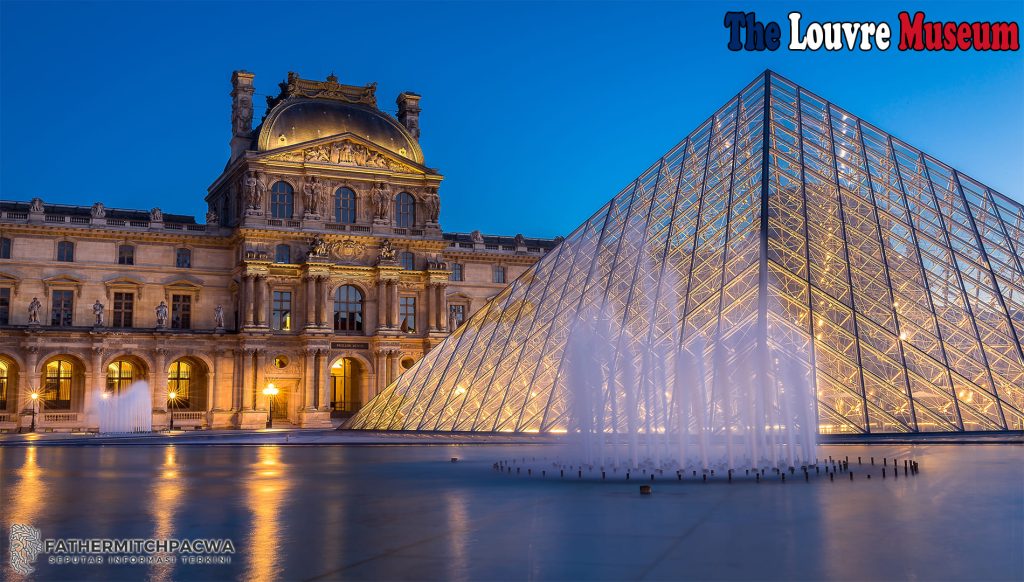The Louvre Museum: A Crown Jewel of French Tourism

Paris, the City of Love, has much to offer to its visitors. From its awe-inspiring Eiffel Tower to its scenic Seine River cruises, this vibrant city never ceases to impress. Among its many iconic attractions, the Louvre Museum stands out as a must-visit destination in France for art lovers and history enthusiasts alike. Let’s delve deeper into the captivating world of the Louvre.
A Brief History of Louvre Museum
The Louvre Museum, or “Musée du Louvre” in French, is not just any museum. It’s the world’s largest and arguably the most visited art museum globally. Originally built as a fortress in the late 12th century, the Louvre has undergone various transformations. It evolved from a royal palace to the art museum we know today in 1793, after the French Revolution.
Collections That Mesmerize
With over 38,000 artworks spanning over 9,000 years, the Louvre’s collection is vast and diverse. It houses artworks from ancient civilizations to mid-19th century modern pieces. While every piece has its own tale, some artworks like the “Mona Lisa,” “Venus de Milo,” and “The Winged Victory of Samothrace” have gained worldwide recognition.
Visitor Experience to Louvre Museum
Navigating the Louvre can seem overwhelming given its size. Spread over an area of 60,600 square meters, it’s almost impossible to see everything in one visit. However, interactive maps and guided tours are available to ensure that visitors don’t miss out on the major highlights.
The glass pyramid entrance itself is a marvel, offering a contemporary contrast to the historical richness inside. Underneath this pyramid lies the Carrousel du Louvre, a shopping mall perfect for picking up souvenirs.
When to Visit Louvre Museum
Being one of the premier attractions in Paris, the Louvre often sees large crowds. To get the best experience, consider visiting during weekday mornings. Late night openings on Wednesdays and Fridays can also offer a quieter experience.
The Louvre Museum is not just an art repository; it’s a testament to human creativity and history. Whether you’re an art connoisseur or a casual tourist, the Louvre promises an enriching experience that transports you through time. So, on your next visit to France, make sure this iconic destination tops your list!
Beyond the Art: The Architecture of The Louvre
While the vast collection of artworks inside the Louvre draws millions, the architectural grandeur of the museum itself is equally captivating. Let’s embark on a journey through the architectural evolution of this iconic structure.
The Fortress Turned Palace
Before it displayed masterpieces, the Louvre began as a fortified royal palace in the 12th century, commissioned by King Philippe Auguste. Its remnants can still be found in the museum’s basement, offering a glimpse into medieval Paris.
Renaissance Transformations
As the centuries rolled on, the building saw extensive modifications. The Renaissance period marked significant architectural changes. With Francis I initiating the renovations, the old fortress started taking the shape of a grand palace. The Cour Carrée, a majestic square courtyard, is a testament to the Renaissance influence on the Louvre.
Classical Additions
The classical period ushered in further expansions. Louis XIII and Louis XIV, in particular, contributed to the Louvre’s evolution with the addition of the west wing and the Grand Galerie. Although Louis XIV eventually moved his court to the Palace of Versailles, the architectural work done during his reign laid much of the foundation for the museum we recognize today.
The Glass Pyramid
Perhaps one of the most iconic and modern architectural elements of the Louvre is I. M. Pei’s glass pyramid. Commissioned in the 1980s as a part of the Grand Louvre project, the pyramid serves as the museum’s main entrance. It’s a harmonious blend of the contemporary with the historic, reflecting the museum’s commitment to evolution and relevance.
The Future of Louvre’s Architecture
The Louvre’s transformation doesn’t stop. With continual renovations and projects, the museum aims to preserve its historical roots while ensuring its architecture remains state-of-the-art. The museum’s commitment to innovation ensures that every visit offers something new, even for those who have wandered its halls before.
Conclusion from Louvre Museum
While the artworks inside remain a significant draw, the Louvre’s architectural journey is a testament to France’s rich history and commitment to art in all its forms. From fortress walls to shimmering glass pyramids, the Louvre stands as an ever-evolving symbol of art, history, and architectural magnificence.






